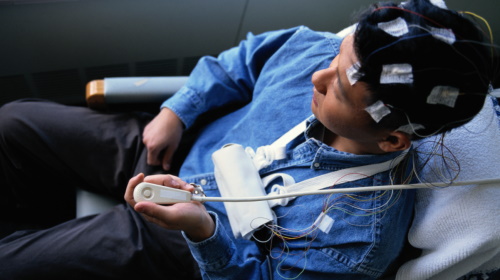Introduction
Every parent's headache is the thought of their newborn dealing with a crucial emergency cpr first aid course situation. Understanding cardiopulmonary resuscitation (CPR) methods particularly customized for infants can be the difference between life and fatality in such situations. Yet, many moms and dads are uninformed of the special methods involved in executing CPR on infants. This detailed overview intends to outfit every parent with vital knowledge and skills pertaining to CPR on newborns, diving into unique strategies that can conserve lives.
CPR on Babies: Unique Methods Every Moms And Dad Must Know
Cardiopulmonary resuscitation (CPR) is a lifesaving technique used in emergencies when somebody's breathing or heart beat has actually quit. While most individuals recognize with grown-up CPR, the methods vary significantly when it comes to babies. The delicate nature of a newborn requires specific methods that differ from those made use of on older youngsters and adults.
Understanding Infant Composition and Physiology
Before delving into CPR strategies, it's crucial to comprehend the anatomy and physiology of a newborn. Newborns have smaller sized lungs, vulnerable ribs, and a different circulatory system than grownups. Understanding these distinctions can help parents perform CPR even more effectively.
The Significance of Airway Management
Newborns' airways are smaller and more prone to blockage; thus, respiratory tract administration is critical during an emergency. Moms and dads ought to find out just how to correctly remove an air passage to guarantee efficient breathing restoration.
Recognizing When to Perform CPR
One of the initial steps in any kind of emergency situation is recognizing when CPR is needed:
- Unresponsiveness: If your baby isn't reacting or moving. No Breathing: If your infant isn't taking a breath normally or at all. Abnormal Skin Color: A bluish color around lips or face suggests lack of oxygen.
Initial Evaluation: The DRSABCD Approach
The DRSABCD method is crucial for examining any kind of emergency situation:
D - Danger: Guarantee the environment is safe. R - Response: Examine if the baby responds by delicately trembling them. S - Send for Help: Call for emergency situation aid if needed. A - Airway: Open up the respiratory tract by tilting the head back gently. B - Breathing: Look for indicators of breathing. C - Compression: If no breathing is discovered, start CPR. D - Defibrillation: Use an AED if readily available and qualified to do so.The Steps to Carry out Baby CPR
Performing CPR on a newborn varies greatly Go to this site from grownups due to their dimension and fragility:
1. Positioning
Lay the infant on their back on a firm surface.
2. Opening Airway
Gently tilt the head back a little to open up the air passage while guaranteeing not to exhaust it.
3. Check Breathing
Look for breast activities and pay attention for breath appears for around 10 seconds.
4. Chest Compressions
Using 2 fingers positioned just below the nipple line, push down around 1/3 deepness of their upper body (about 1-1.5 inches) at a rate of 100-120 compressions per minute.
5. Rescue Breaths
After every 30 compressions, provide 2 mild rescue breaths:

- Seal your lips around their mouth and nose, Deliver each breath over one secondly while observing for breast surge, Repeat till you see indicators of life or aid arrives.
Common Blunders During Infant CPR
Even well-intentioned efforts might falter due to typical mistakes:
- Applying excessive stress throughout compressions can cause injury. Failing to make sure appropriate head tilt might obstruct airflow. Not asking for support early enough can postpone critical care.
Mental Prep work for Emergencies
It's natural to really feel panic in emergencies; nonetheless, mental prep work plays a crucial function expert cpr first aid training in properly performing first aid steps:
- Remain calm; panicking hinders clear thinking. Practice mindfulness methods before going into parenthood.
FAQs Regarding CPR on Newborns
What should I do if my newborn quits breathing?
If your newborn stops breathing, swiftly analyze their responsiveness, phone call for help, check their respiratory tract, and commence CPR as in-depth above.

How usually ought to I take first aid courses?
It's advised that parents freshen their knowledge every two years by taking first aid courses or particular baby CPR training sessions.
Can I make use of an AED on an infant?
Generally talking, AEDs are not recommended for babies under one year old unless specifically made for such use; constantly adhere to supplier's instructions.

Where can I discover first aid training courses near me?
You can browse online making use of terms like "first aid course near me" or inspect neighborhood healthcare facilities or recreation center that frequently provide these classes regularly.
How long does a first aid accreditation last?
Typically, the majority of first aid qualifications stay legitimate for three years prior to requiring renewal with correspondence course which include updated methods like DRSABCD protocols.
Is it necessary to learn mental health first aid as well?
Absolutely! Mental health first aid equips moms and dads with abilities needed not just in physical emergency situations however additionally in identifying emotional distress amongst kids and adolescents.
Conclusion
Understanding "CPR on Newborns: Distinct Techniques Every Moms And Dad Need To Know" isn't merely concerning getting technological abilities; it has to do with equipping yourself as a caretaker ready to encounter unexpected obstacles head-on. Whether via devoted training programs like those provided by various companies or practicing hands-on techniques with relative during workshops-- every initiative counts towards building confidence in your ability to respond properly during emergencies including your valuable newborns.
Incorporating this understanding into your parenting toolkit might indicate saving lives when it matters most. So why wait? Register today for classes such as "first aid training course," "cpr training," or specialized "infant first aid training course" options available close by-- you never ever understand when you might need them!